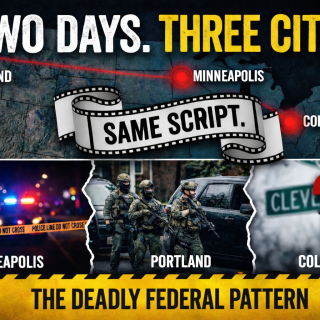Dear unrepresentative council member Rob Dorans,
May I give you a tour of Columbus or any other city in the US or the world? Have you ever been to a functional city with credible urban planners and traffic engineers? Do you know what an actual neighborhood is? Have you or another employee of the failing city, and city of Columbus studied cities, and their histories? NO!
You and your city flunkies, the paid agents of out-of-control tax abatements and TIFs with no accountability demonstrate your profound ignorance with your latest uninformed and dangerous “Where Do We Begin? Identifying Initial Focus Areas for Modernizing the City of Columbus’ Zoning Code.”
Look at the rhetoric and grammar itself. Can you translate any of this poor sloganeering into communicable English, let alone urban policy? Where does who begin what? Identifying initial focus areas? Modernizing? What do you mean? None of these terms speaks for itself. Do you or your scribal aides have any idea? Has anyone taken freshman composition, let alone urban planning?
The report is not a report, but a pseudo-glossy contentless minimal information piece of self-advertising. Entitled “Zone-In Columbus,” it means “Zone Out.” Photos, maps, and text bear to relationships to each other. The maps are almost completely uninformative. It desperately needs a graphic and a textual editor. There is absolutely no discussion of the historical use and abuse of the never-up-to-date City Zoning Code. It is typically poor marketing.
Let me start with overarching observations.
- It is not 1945 or 1955. It is 2023. Your plan bears no relationship with urban reality, in Columbus or anywhere else. This completely unacceptable.
- You are unfamiliar with the city that you purport to “lead” (that is, further destroy the broke, filthy city, in The Columbus Way).
- You peddle through your ignorant prattle a series of faulty premises and false expectations: I mention only a few.
a. You confuse growth, density, and height. They are not the same. Growth in Columbus, as everywhere, is sporadic. The predictions of the City’s developers’—including the Columbus nonPartnership and Colemanville Development Commission--are chosen and paid “consultants” can never be accepted at face value.
b. Growth is uneven as well as sporadic.
c. As Columbus “grows,” inequality, homelessness, differential mortality, health and food deserts, filth, and broken streets and sidewalks only increase. How can you not know that? You purport to live in the city that pays you.
d. Density and height are not the same. Neither leads directly or automatically to the other. Look at Columbus’ recent or longer-term patterns. Read Kevin Cox’s Boomtown Columbus (2021), that is, if you read. Read almost any urban history.
e. What is your goal? That is nowhere clear. If is increasing affordable housing, that means that new and converted development—not “growth,” “density,” or “height” must be the focus.
f. Why is there no specific discussion of green energy, electric vehicle affordable mass transit? That is a glaring omission.
Rob Dorans, are you not aware that the radically out-of-date Zoning Code of Columbus has never been followed? The University District, to take the major example that I know best, was destroyed by City Zoning granting all but automatic variances for multiple property ownership with no limit on the number of residents in a dwelling. Technically speaking, the HomeTeams, NorthSteppes, OSUlives, OSUproperties, Buckeye Realties, Pellas, GAS, etc., etc. are illegal.
OSU profited from the destruction of the neighborhood that housed most of its students from 1870 on. The UAC and UDO closed their eyes as long as their own streets were not threatened.
Zoning is a political and economic game. To the winners, go the spoils. But Columbus’ publics are never the winners.
Your likely revisions will make a bad situation worse. But you don’t care, do you? How can you actually state, falsely, that you “know many people want their neighbors to stay as they are, never changing”? (“Growing vertical: See where in Columbus leaders have identified for denser development,” Columbus Free Press, Apr. 6, 2023)
Neither you nor Kevin Wheeler, “the city’s assistant director for growth policy” know the city. What, in fact, is “growth policy”? That is tax abatements without accountability and TIFs that drastically reduce public tax dollars for public schools, public services, law enforcement, and public safety.
How can “Identifying Initial Focus Areas” deal with 62 “corridors,” most of which are not “corridors” in any accepted meaning of the word? That is not planning or policy.
In the end, it does not matter. The present Zoning Enforcement “team” enforces nothing. That is why buildings explode and are evacuated with no humane plans for their inhabitants. Zoning UnEnforcement favors the large developers and landlords. That should surprise no one. That is The Columbus Way.
May I show you Columbus? Are you aware of the destruction of “growth” to established and historic neighborhoods from the University District, Franklinton, Weinland Park, to Italian Village and the privileged but declining Short North?
Your entire approach is based on at least three long disproved but never established presumptions: They can be stated simply and starkly as:
- Trickle down economics
- Throw everything at the wall and see what sticks—if anything. But with no plan, program, policies, budget, timetable, or modes of assessment. None of that is permitted under The Columbus Way
- If you build it, they may—or very likely may well not – come.
It is 2023. Columbus is an actual if dysfunctional city of 900,000. Do you live here?
--------------------------------
Harvey J. Graff is Professor Emeritus of English and History at The Ohio State University and inaugural Ohio Eminent Scholar in Literacy Studies. Author of many books, he writes about a variety of contemporary and historical topics for Times Higher Education, Inside Higher Education, Washington Monthly, Publishers Weekly, Against the Current, Columbus Free Press, and newspapers. Searching for Literacy: The Social and Intellectual Origins of Literacy Studies was published by Palgrave Macmillan in 2022. My Life with Literacy: The Continuing Education of a Historian. The Intersections of the Personal, the Political, the Academic, and Place is forthcoming. He is now writing “Reconstructing the ‘uni-versity’ from the ashes of the ‘multi- or mega-university.’”



